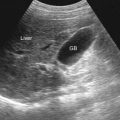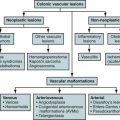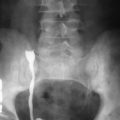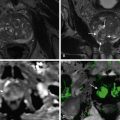The hepatic veno-occlusive diseases are a heterogeneous group of circulatory disorders characterized by obstruction of hepatic venous outflow at the sinusoidal or postsinusoidal levels. These disorders uniquely manifest portal hypertension before overt hepatic parenchymal disease and dysfunction, in contrast to other causes of hepatic disease in which hepatic dysfunction precedes portal hypertension. The focus in this chapter is on the most common types of sinusoidal (sinusoidal obstruction syndrome) and postsinusoidal (Budd-Chiari syndrome) veno-occlusive disease.
Etiology
Sinusoidal Obstruction Syndrome
Sinusoidal obstruction syndrome (SOS) (formerly known as hepatic veno-occlusive disease [VOD]) is a toxin-induced, usually iatrogenic, vascular hepatic disorder. Previously thought to require the involvement of the hepatic venules, it is now recognized that SOS primarily afflicts the sinusoids and may spare the hepatic venules.
SOS was first linked to the ingestion of pyrrolizidine alkaloids in teas from Senecio, Heliotropium, and Crotalaria, sometimes resulting in epidemics of SOS in developing areas. In the West, SOS occurs almost exclusively in patients with cancer as a complication of chemotherapy and abdominal irradiation. Several chemotherapeutic and immunosuppressive agents have been implicated, but the most serious cases of SOS develop after hematopoietic stem cell transplantation with myeloablative conditioning. In patients undergoing stem cell transplant, the risk for developing SOS includes a history of prior stem cell transplantation, hepatitis C infection with elevated levels of aminotransaminases, underlying hepatic fibrosis or cirrhosis, advanced age, and infection at the time of transplant. Although controversial, there is no convincing evidence to support causation by thrombosis secondary to clotting and hypercoagulable states.
Budd-Chiari Syndrome
Budd-Chiari syndrome (BCS) refers to postsinusoidal obstruction at any level, from the small hepatic veins to the junction of the inferior vena cava (IVC) with the right atrium. Mechanical obstruction can be either primary or secondary. In primary BCS, the obstruction arises from the venous wall (fibrosis or phlebitis) or lumen (thrombosis). In secondary BCS, the obstruction originates from outside the vein and may be caused by extrinsic compression (abscess, cyst, or solid tumor) or tumor invasion.
Intravascular thrombosis is the most common mechanism of hepatic venous obstruction in primary BCS; at least one acquired or inherited procoagulative disorder is identified in up to 75% of patients. Acquired myeloproliferative disorders, such as polycythemia vera and, less commonly, essential thrombocythemia and myelofibrosis, account for 50% of cases of BCS. In the majority of cases, BCS is the initial manifestation of the underlying myeloproliferative disorder. Other acquired procoagulative states include paroxysmal nocturnal hemoglobinuria, malignancy, anti–phospholipid antibody syndrome, Behçet’s disease, pregnancy, and oral contraceptive use. The most common inherited procoagulative disorder is factor V Leiden deficiency, occurring in up to 30% of cases of BCS. Other inherited states result in elevations of prothrombin, factors VII and VIII, and homocysteine and in deficiencies of antithrombin, protein C, and protein S.
Secondary BCS is sometimes seen when a malignant tumor grows within the lumen of its associated venous outflow tract (hepatocellular carcinoma [HCC], renal cell carcinoma, Wilms’ tumor, and hepatic angiosarcoma). It also can result from extrinsic compression by malignant and benign solid tumors of the liver or adjacent organs, intrahepatic hematomas, hepatic abscesses, hydatid cysts, and hepatic cysts in polycystic kidney disease. No precipitating cause is identified in 10% of cases of BCS.
Pathogenesis
Sinusoidal Obstruction Syndrome
The inciting event in SOS is toxin-mediated sinusoidal endothelial injury. The injured endothelial cells undergo a morphologic transformation from their normal spindle shape to a rounder configuration, which narrows the sinusoidal lumen and introduces gaps between the cells. Blood flows through the gaps into the space of Disse, detaching endothelial as well as other perisinusoidal cells. The detached cells embolize downstream, causing further sinusoidal and possibly venular obstruction. Eventually, sinusoidal and centrilobular fibrosis ensues, causing hepatic congestion and manifesting clinically as portal hypertension. Later, the resulting low-flow state causes redistribution of the hepatic microcirculation and focal hepatic ischemia, culminating in centrilobular hepatocyte necrosis.
Budd-Chiari Syndrome
Postsinusoidal obstruction causes sinusoidal (and portal) pressure to increase. Increased sinusoidal pressure promotes centrilobular sinusoidal dilatation and congestion. The congested liver enlarges. Sinusoidal perfusion diminishes, and centrilobular ischemia and necrosis may occur. Stagnant blood flow and an underlying procoagulant state may precipitate concomitant thrombosis of the extrahepatic (10%) and intrahepatic (50%) portal veins. Areas in which there is simultaneous obstruction of the hepatic and portal veins undergo infarction. Perivenular fibrosis develops within weeks of the obstruction.
Pathogenesis
Sinusoidal Obstruction Syndrome
The inciting event in SOS is toxin-mediated sinusoidal endothelial injury. The injured endothelial cells undergo a morphologic transformation from their normal spindle shape to a rounder configuration, which narrows the sinusoidal lumen and introduces gaps between the cells. Blood flows through the gaps into the space of Disse, detaching endothelial as well as other perisinusoidal cells. The detached cells embolize downstream, causing further sinusoidal and possibly venular obstruction. Eventually, sinusoidal and centrilobular fibrosis ensues, causing hepatic congestion and manifesting clinically as portal hypertension. Later, the resulting low-flow state causes redistribution of the hepatic microcirculation and focal hepatic ischemia, culminating in centrilobular hepatocyte necrosis.
Budd-Chiari Syndrome
Postsinusoidal obstruction causes sinusoidal (and portal) pressure to increase. Increased sinusoidal pressure promotes centrilobular sinusoidal dilatation and congestion. The congested liver enlarges. Sinusoidal perfusion diminishes, and centrilobular ischemia and necrosis may occur. Stagnant blood flow and an underlying procoagulant state may precipitate concomitant thrombosis of the extrahepatic (10%) and intrahepatic (50%) portal veins. Areas in which there is simultaneous obstruction of the hepatic and portal veins undergo infarction. Perivenular fibrosis develops within weeks of the obstruction.
Prevalence and Epidemiology
SOS occurs after hematopoietic stem cell transplantation. Large-scale epidemiologic studies to assess prevalence, incidence, and demographic factors have not been conducted. The annual incidence of BCS is 1 in 100,000. Women in their third or fourth decades of life are afflicted most commonly.
Veno-occlusive disease is a class of hepatic vascular disorders in which obstruction of sinusoidal or postsinusoidal hepatic venous outflow results in portal hypertension. Historically, this term was used to describe SOS only. More recently, the term has been broadened to include BCS as well as SOS.
BCS may be acute (presentation within 4 weeks of obstruction) or chronic (obstruction present for at least 6 months).
Clinical Presentation
Sinusoidal Obstruction Syndrome
SOS usually manifests 1 to 2 weeks after stem cell transplantation. The first symptom is abdominal pain, followed by ascites, tender hepatomegaly, jaundice, and weight gain (from fluid retention). Laboratory abnormalities include direct hyperbilirubinemia initially with subsequent elevations in alkaline phosphatase and aminotransferases. Renal dysfunction (with up to 50% of patients requiring dialysis), diuretic-resistant fluid retention, recalcitrant thrombocytopenia resulting from splenic sequestration, and encephalopathy occur later. SOS is an acute or subacute illness that either fully resolves, usually in 2 to 3 weeks, or ends in death. All-cause fatality from SOS varies according to disease severity, with fatality rates in one series reported as 9%, 23%, and 98%, in mild, moderate, and severe disease, respectively. Patients who recover do not develop cirrhosis.
SOS is a clinical diagnosis that uses noninvasive criteria devised by groups from Seattle and Baltimore. Both sets of criteria use variable combinations of hyperbilirubinemia, weight gain, ascites, and hepatomegaly within 3 weeks of stem cell transplantation. The diagnosis can be confirmed by liver biopsy. If percutaneous biopsy is contraindicated because of thrombocytopenia, a transjugular approach may be employed, at which time the hepatic venous pressure gradient may also be measured. When elevated above 10 mm Hg, this gradient has a specificity of 90% in the appropriate clinical scenario.
Budd-Chiari Syndrome
The clinical manifestations and severity of BCS depend on the location and acuity of the venous obstruction. Asymptomatic disease occurs in patients with obstruction of only one hepatic vein or more than one hepatic vein with the development of collateral vessels. Slow obstruction of two hepatic veins results in chronic disease, whereas sudden obstruction of all three hepatic veins or the extrahepatic IVC may produce fulminant hepatic failure.
Patients classically present with ascites, hepatosplenomegaly, and right upper quadrant abdominal pain. Lower extremity edema and venous collaterals on the abdominal wall may be evident. The presentation is acute in 20% of patients. Serum values of aminotransferases, alkaline phosphatase, and bilirubin are moderately elevated, whereas those of plasma coagulation factors are diminished. Twenty-five percent of patients with acute BCS progress to fulminant hepatic failure. The presentation is chronic in 80% of patients; 20% of these patients progress to cirrhosis. Laboratory abnormalities are milder than in the acute form. The prognosis of chronic BCS has improved owing to advances in supportive care, with a current 1-year transplant-free survival of 80% and a 10-year transplant-free survival of 60%.
BCS is an imaging diagnosis. Liver biopsy may suggest the diagnosis but is not specific.
Pathology
SOS and BCS have similar pathologic features. In both conditions, acute venous obstruction is characterized by dilated centrilobular sinusoids filled with erythrocytes. Associated findings include parenchymal compression as well as atrophy and loss of hepatocytes. Erythrocytes may extravasate into the space of Disse and replace the disappearing hepatocytes. In severe cases, blood-filled lakes may form in the centrilobular zone, with little recognizable hepatic parenchyma. Cholestatic changes may develop at the periphery of the injured areas. Hemosiderin-laden macrophages may be present, but inflammation is absent to minimal.
In chronic BCS, fibrosis of the centrilobular zones may develop and may progress to bridging fibrosis between central veins. This form of fibrosis spares the portal tracts, resulting in a pattern termed reserve lobulation or venocentric cirrhosis, although end-stage cases may be indistinguishable from cirrhosis from other causes.
A key pathologic difference between SOS and BCS is that thrombus within central veins is characteristic of BCS but not of SOS. The central veins in SOS may contain fibrin deposits, as demonstrated via electron microscopy and immunohistochemistry, but thrombus is rare. Grossly, involvement of the liver tends to be uniform in SOS. Involvement may be uneven in BCS, depending on the sites of venous obstructions; areas of the liver drained by nonoccluded hepatic veins may undergo compensatory hypertrophy. BCS may progress to cirrhosis, but SOS does not.
Imaging
Whereas SOS has a characteristic clinical manifestation and is a unique complication of chemoradiation or hematopoietic stem cell transplantation, hepatic venous obstruction secondary to BCS can be due to many causes, including HCC, venous invasion from an extrahepatic malignancy, or occlusion of the intrahepatic or suprahepatic IVC. Thus, the imaging evaluation should not only seek to secure the diagnosis of hepatic venous obstruction but also attempt to identify the cause of the obstruction.
Radiography
Plain radiography has no routine role in the assessment of SOS or BCS because hepatomegaly is the only reliable finding.
The venographic findings in SOS are not well characterized. In BCS, venography is considered the diagnostic gold standard. In acute BCS, liver edema may cause smooth extrinsic narrowing of the IVC and hepatic veins. In chronic BCS, collaterals may form between the hepatic and systemic veins. These small collateral vessels have a characteristic “spiderweb” appearance during venography ( Figure 42-1 ).
Computed Tomography and Magnetic Resonance Imaging
Sinusoidal Obstruction Syndrome
Compared to the unaffected liver parenchyma, the affected portion of the liver may be hypoattenuating on computed tomography (CT) and have heterogeneous signal intensity on magnetic resonance imaging (MRI) on unenhanced images. Low attenuation and heterogeneous signal intensity persist after the administration of contrast material. Periportal edema is present and manifests as periportal low attenuation on CT24 and high signal on T2-weighted MRI. Intrahepatic collateral vessels, which can appear as round foci of enhancement on the portal venous and delayed phases of contrast administration, may be observed. Hepatic veins are narrow but patent. In the setting of liver irradiation, the affected region may have a geographic or polygonal morphology that does not conform to an anatomic segment. Other findings include hepatomegaly, gallbladder wall thickening, and ascites.
Budd-Chiari Syndrome
In the acute phase of BCS, the liver is enlarged. The periphery of the liver is hypoattenuating on unenhanced CT and of high signal intensity on T2-weighted MRI ( Figure 42-2 ). The liver enhances heterogeneously. Relative hypoenhancement of the periphery of the liver is characteristic. Areas of the liver with independent venous drainage, such as the caudate lobe, hyperenhance on the arterial phase. The resulting fan-shaped enhancement pattern ( Figures 42-3 and 42-4 ) may reverse on delayed-phase imaging, with the caudate lobe and central portion of the liver demonstrating lower attenuation or signal intensity than the periphery. If only one or two hepatic veins are occluded, the characteristic enhancement pattern may be confined to the affected portions of the liver ( Figure 42-5 ). The occluded hepatic veins may be nonvisualized or may show lack of intraluminal enhancement. Coronal imaging may be helpful to assess the IVC for compression or thrombus.









